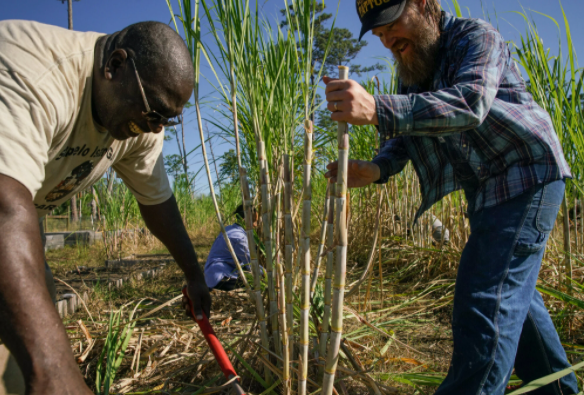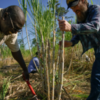SAPELO ISLAND, Ga. — Fall is cane syrup season in pockets of the Deep South, where people still gather to grind sugar cane and boil its juice into dark, sweet syrup in iron kettles big enough to bathe in.
This autumn, no cane syrup has been more significant than the batches Maurice Bailey and his friends made from the first purple ribbon sugar cane grown here on Sapelo Island since the 1800s.
The 11-mile-long barrier island is home to the Salt Water Geechees, who can trace an unbroken line back to about 400 West Africans who were enslaved and put to work growing a type of sugar cane that their descendants are now trying to revive. Almost all of the island’s 16,500 acres are in public hands, save the land in and around the community of Hog Hammock, where fewer than 50 people still live.
Growing enough cane to make syrup hasn’t been easy. The effort to bring purple ribbon cane back to Sapelo Island started in 2014, when David Shields, a professor at the University of South Carolina and culinary historian, met with Cornelia Walker Bailey, the author and unofficial historian for the island, who died in 2017. It was her idea to create an agricultural business.
The cane project is essentially a one-man operation, with a lot of sweat and support from Nik Heynen, a geography professor at the University of Georgia, and a rotating band of volunteers. Growing the cane, cutting it and figuring out how to make cane syrup has made the two men as close as brothers. Dr. Heynen is so devoted to the project that he had an image of one of the island’s wild bulls tattooed on his arm after he saw one while driving across the island with Ms. Bailey.
To read more of Kim Severson's article, please click here.



Comments (0)